Luke Milliron, UCCE Orchards Advisor, Butte, Tehama & Glenn Counties; and Janine Hasey, UCCE Orchards Advisor, Sutter-Yuba & Colusa Counties
From the northern San Joaquin Valley to the northern Sacramento Valley, walnut farmers and their consultants are reporting a widespread and alarming issue of walnut trees not leafing out this spring. UC farm advisors, specialists and professors are working together with growers and crop consultants to find out why. The initial hypothesis from researchers is that we are seeing frost damage from mid-November, however the symptoms on mature blocks are both more unusual and more severe than autumn freeze events in recent memory.
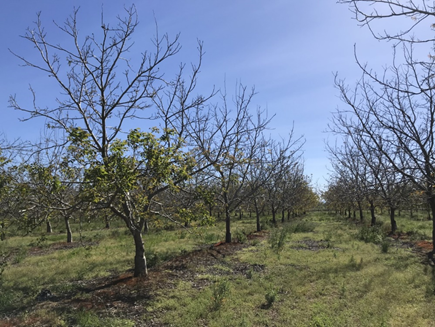
Photo 1. Variable severity of symptoms in this flood irrigated block near Gridley, CA. The tree in the front left of the photo has only leafed out low in the canopy. The trees towards the ends of these flood irrigated rows (seen in the distance) leafed out normally. Roughly two-thirds to three-quarters of the trees in this block showed symptoms (photo: Luke Milliron).
Farm advisors on the east side of the Sacramento Valley began receiving panicked calls in the third week of April from concerned PCAs and growers that large swaths of walnut orchards were only partially leafing out. Even earlier, similar calls were coming in to farm advisors in the northern San Joaquin Valley. The pattern of affected trees has been highly variable across these orchard blocks. Orchard blocks visited have had significant differences including variety, (e.g. Chandler, Howard, Solano, Gillet, Tulare, etc.), rootstock (e.g. Paradox seedling, VX211, Vlach, Black), soil type, irrigation system, and of course management (photos 1-3). Upon closer inspection, twigs on the symptomatic wood have often had a shriveled and desiccated appearance and still had green/living tissue when cut (photos 4-5). Conversely, in some orchards (especially in young blocks) that are not leafing out, cutting into branches reveals characteristic brown freeze damaged tissue next to green healthy tissue (photos 6-7). Orchards with affected trees may appear to have dead canopies, however, adventitious buds are breaking dormancy and may allow for the development of new canopies in some situations (photos 8-11).
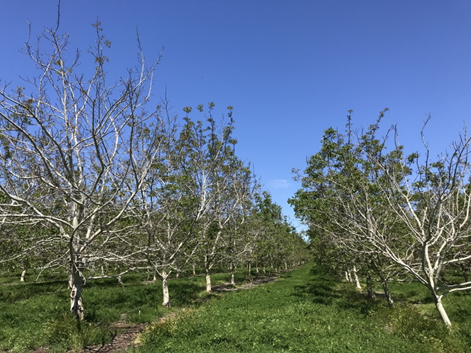
Photo 2. The symptomatic trees in this Chandler block northwest of Chico, CA were predominantly the first couple trees on the southern edge of the block. The overall percentage of symptomatic trees in this block was low (photo: Luke Milliron).
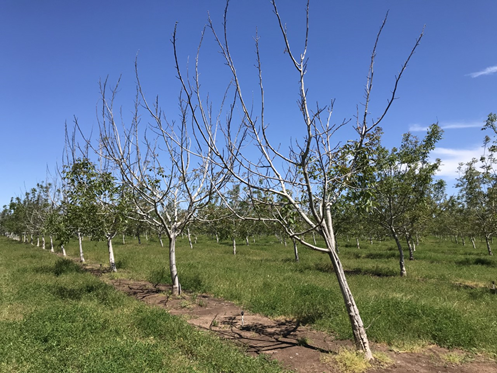
Photo 3. Highly variable severity of symptoms, with sporadic clusters of trees that did not leaf out down each row. At least one-third of the trees in the portion of the orchard depicted above showed symptoms (this orchard is to the southwest of the orchard in photo 2, photo: Luke Milliron).
Initial Diagnosis of Winter Kill:
We believe that the dieback we are seeing is likely related to a sudden autumn frost event last November. For example, the CIMIS weather station in Sutter County reported warm daytime temperatures with nighttime temperatures mainly in the 40°F range in early November. On November 9 and for the next 11 days, lows dropped into the twenties with the lowest temperature at 26.4°F on November 14 while daytime temperatures were in the sixties. We believe the sharp swing in daily temperatures throughout the valley from relatively warm daytime temperatures to below freezing in orchards that weren’t fully dormant, is a significant part of why we are seeing severe damage.
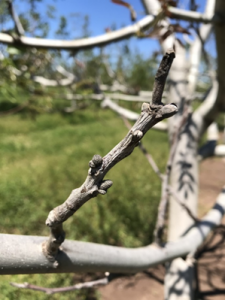
Photo 4. Much of the smaller wood on affected trees had a shriveled (desiccated), appearance (photo: Luke Milliron). Click to enlarge.
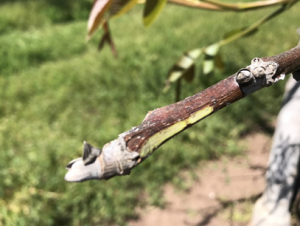
Photo 5. Generally, when you cut into the shriveled spurs and shoots, there was still green/living tissue (photo: Luke Milliron). Click to enlarge.
Questions and Uncertainty Remains:
Coinciding with this time frame was the Butte County Camp Fire which caused extremely poor air quality in the region. Everyone was focused on dealing with the smoke issues and we didn’t realize how cold the nights were last November until this spring as trees were leafing. Some of our questions include could the smoke have had some effect, what role is tree carbohydrate status playing, and what were the predisposing factors (e.g. when were trees last irrigated before the cold event)? We believe predisposing and orchard specific factors are key given that healthy blocks are often adjacent to severely affected blocks, and within affected areas some trees appear healthy.
The information below is what we have learned from previous frost/freeze events and is provided if you conclude your walnut orchard has winter kill.
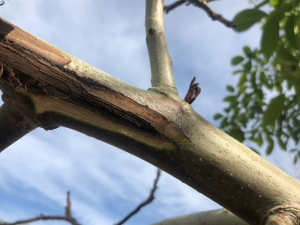
Photo 6. Characteristic brown freeze damaged tissue next to green healthy tissue in a 10-year-old tree. Many of the limbs in this orchard were still green but drying out as we have seen in many other orchards. Click to enlarge.
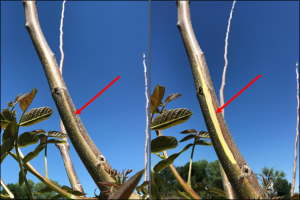
Photo 7. This characteristic distinct margin of dead and living tissue is typically seen in very young orchard blocks (photo: Luke Milliron). Click to enlarge.
Winter Kill from Cold Injury on Walnuts
At what temperatures may you see freeze damage on mature and young walnut trees? There are many factors that will affect the cold hardiness and the temperatures a walnut tree can withstand when a freeze event occurs including hardening against low temperature, moisture level in root zone, tree age and stress level.
- In an autumn frost, which is what we experienced in 2018, there can be damage to young walnut trees at 28o Unhardened and vigorous trees are especially vulnerable. What is unusual this spring is that most of the damage we’re seeing is in older orchards (e.g. Photos 1 & 2). This is where the next point most likely played an important role in the extent of damage seen in some orchards.
- Trees with adequate soil moisture are better able to withstand low temperatures without damage than trees that are dry. Water conducts and stores more heat than air spaces. We had a dry October and November. Most of the damaged orchards I have visited thus far had either not been irrigated since early October. For those orchards that had been irrigated later, the affected areas received less irrigation or were a different soil type so were probably drier.
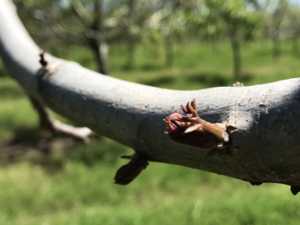
Photo 8. On otherwise blank branches, some adventitious buds are beginning to push. These buds are held in reserve on trees to allow for regrowth following dieback and other severe stressors (photo Luke Milliron). Click to enlarge.
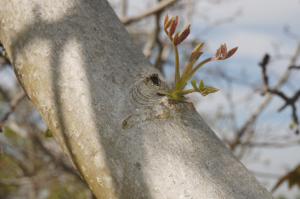
Photo 9. Adventitious shoots growing from limbs (see reddish growth, photos: Janine Hasey). Click to enlarge.
How do you manage frost/freeze damage?
- With freeze damaged wood, budbreak can be quite delayed. In the spring if you suspect cold damage, do NOT prune out the damaged limbs. The buds may be slow in opening or buds from deep in the bark may grow to rejuvenate the limb (Photos 7-10). Wait until mid-summer to prune out the dead wood that did not revive. New scaffolds that grew can be trained to replace the damaged wood.
- Protect exposed areas where buds are breaking from sunburn by painting the southwest side of trunks or limbs with tree paint or white latex paint 50:50.
- Reduce and delay spring fertilizer applications where cold damage is evident. Much of the nitrogen demand is from the crop, and therefore should be reduced in relation to the expected yield reduction.
- With less leaf surface, there is less transpiration. Delay the start of irrigation and monitor trees carefully using a pressure chamber and/or soil moisture measuring devices through the season.
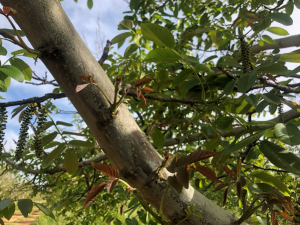
Photo 11. Adventitious shoots growing from limbs (see reddish growth, photos: Janine Hasey). Click to enlarge.
How can frost/freeze damage be prevented or reduced?
- Withdraw irrigation in September until a terminal bud is set on the trunk of young trees to harden the trees.
- If there has not been adequate rainfall by the end of October, irrigate young and mature orchards so the soil is moist going into November.
- If a frost or freeze is predicted and the soil is dry, it should be wetted 3-5 days prior to a frost night to fill the air spaces so the soil will store more heat. Avoid water on the soil surface before a freeze since it will make the soil surface colder because of evaporative cooling.
- If frost damage is suspected in the fall or winter, check the tissue for drying or browning. Subsequent sunburn can further damage tissue on the southwest side of tree and white paint is recommended.



Leave a Reply